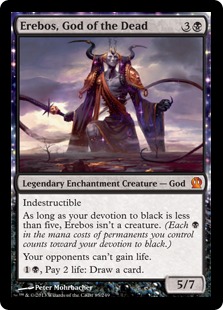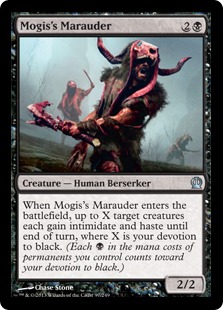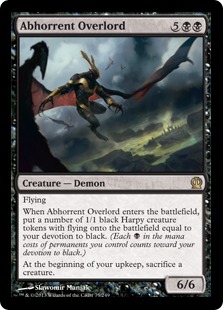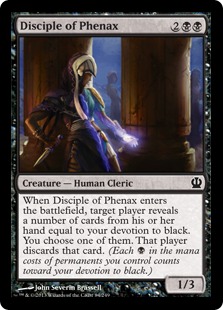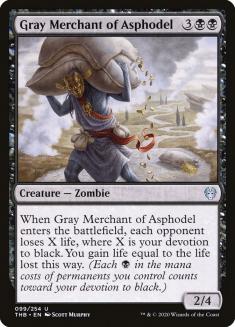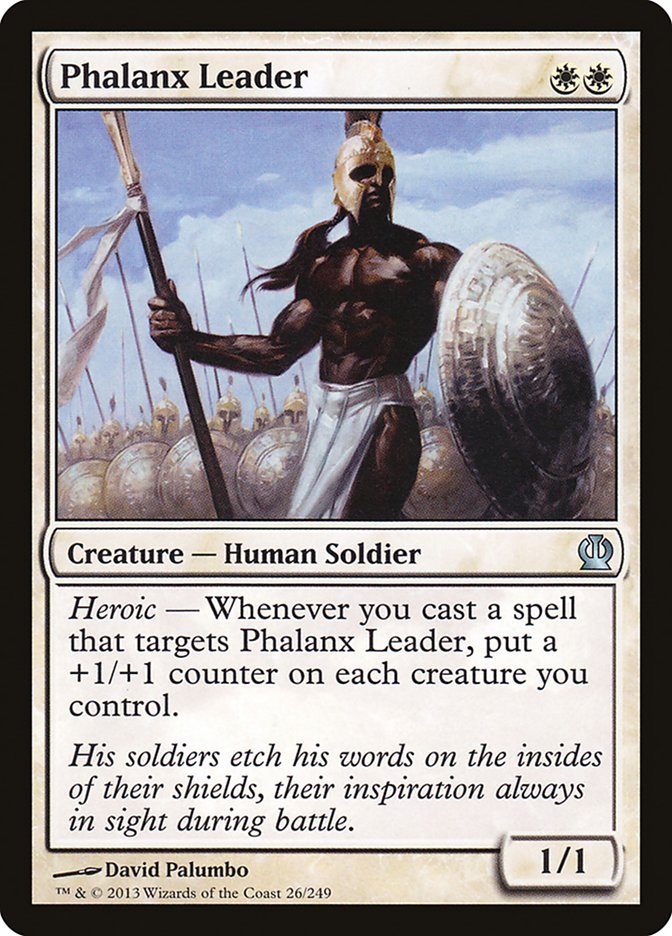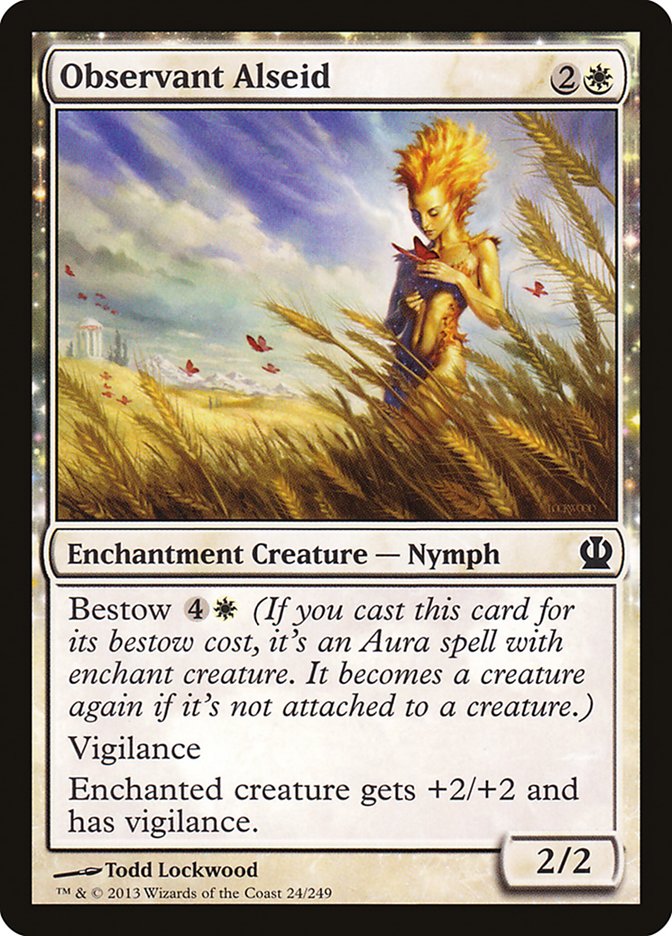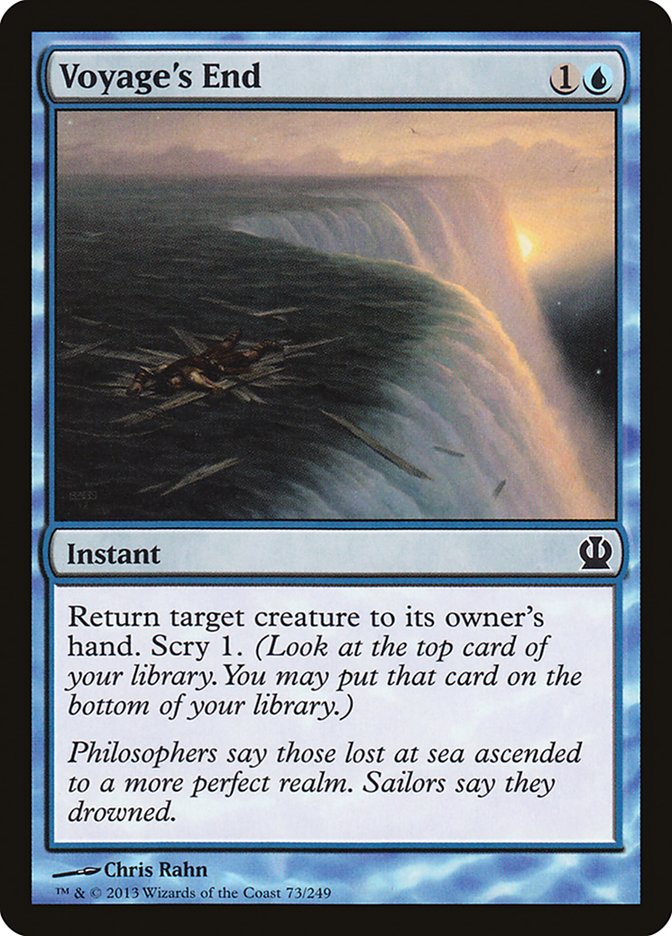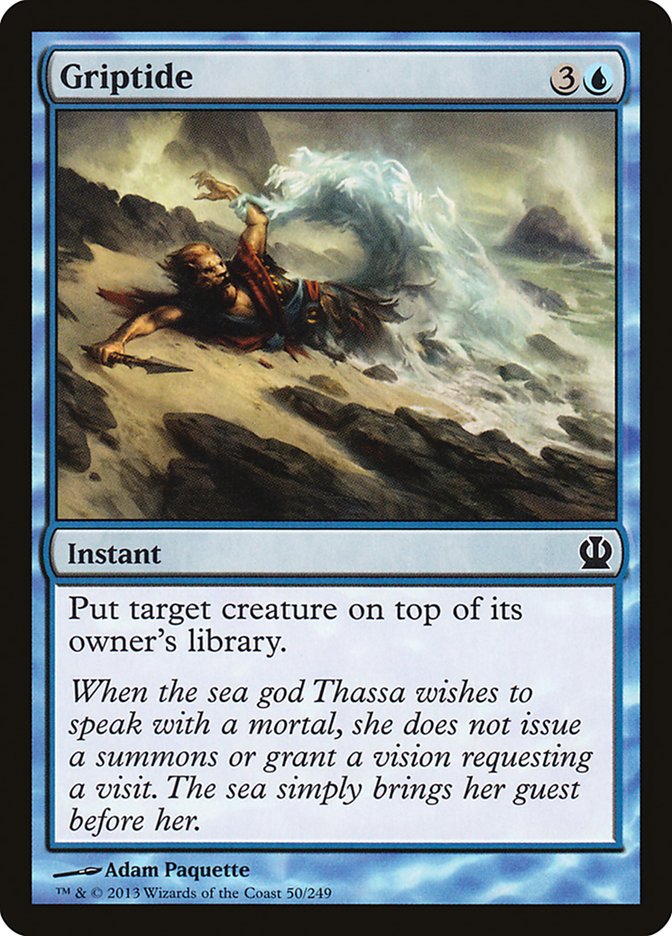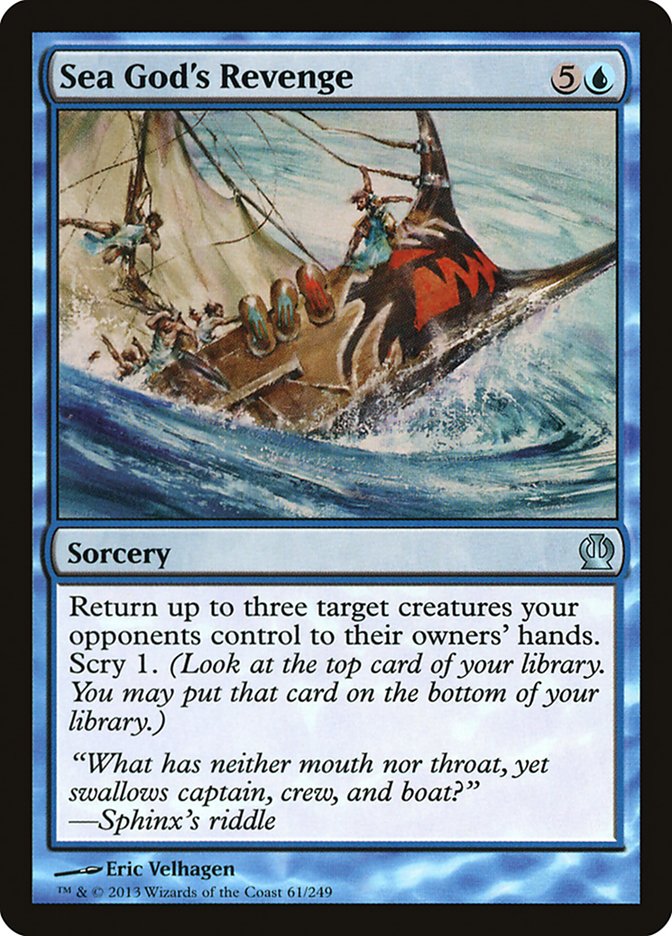The StarCityGames.com Team Sealed Open in Worcester, Massachusetts is right around the corner. This event also has the distinction of being the first major Limited event to use Theros. I had my first opportunity to play Theros Limited this past weekend at a few Prerelease tournaments. While I look forward to getting a deeper feel for the format, I have some ideas that I think will end up being true about this Team Sealed environment. While I intend to talk about Theros specifically in this article, if you are interested in learning about Team Sealed in a more general sense, then please check out my past team sealed article here.
Devotion
Because each of your team’s Sealed decks essentially get the pick of the litter from twelve packs instead of the normal six, it causes the decks to be much more focused than normal. The way the devotion mechanic works, it rewards focused decks. For this reason, I expect the devotion cards to be exceptionally potent in Team Sealed.
Between playing with and observing some of the new Gods in play at the Prerelease over the weekend, I found that they were a little bit weaker than I expected, albeit still very good. Although they all have good and relevant abilities, they are substantially more powerful when able to be giant indestructible creatures. While this certainly happened and created extremely powerful game-winning threats, often players were able to prevent their opponents from reaching or maintaining the five devotion required. I expect that in Team Sealed this will be much less likely to happen. The Gods will be in creature form and ready to completely dominate combat.
In Theros Team Sealed, you are going to be faced with the decision of making small sacrifices in the power level of specific cards in your deck to enhance the power of other cards in your deck. Let’s say you open a pool where you want to build a black deck with a bunch of black devotion cards. Maybe your pool has something like Erebos, God of the Dead; Mogis’s Marauder; Abhorrent Overlord; a couple copies of Disciple of Phenax, and a couple Gray Merchant of Asphodels. While this would be a pretty rare and welcome occurrence in a normal Sealed tournament, this is much more common, although still very welcomed in Team Sealed.
Let’s suppose you decide to pair your black with green in this instance. Towards the end of building, you are deciding whether or not to include a card like Felhide Minotaur. As a 2/3 for 2B, it’s not a terrible card, but it’s certainly nothing to write home about. In this case, you are probably better off including it than something like Nessian Courier. Nessian Courier is a better card—a 3/3 for the same price—however, sacrificing a single point of power to make all of your devotion cards better is almost certainly worth it.
This point is obviously somewhat extreme because the two cards are so close in power level, but I think that the cases of playing the card that favors your devotion over a better card of another color could be far more extreme than that. Just remember when you are evaluating cards in these situations to make sure you are weighing the cards as a piece of your entire deck rather than just card versus card.
As for devotion in general, I was a little skeptical of how powerful the mechanic would be going into the Prerelease. Certain cards like Abhorrent Overlord, which are fine on their own, I expected to be great with the devotion as an added bonus. Specifically, Gray Merchant of Asphodel and Nylea’s Disciple have both vastly exceeded my expectations for them so far. Both have the unique quality of being pretty good early on and also pretty good if the game goes very long. If you play them early against an aggressive deck, often their sizable bodies and some modest life gain is very relevant. If the game goes very long, their impact can just be enormous, gaining you a ton of life, and in the case of the Merchant also draining your opponent.
It is worth noting that both of the cards I just talked about are common. Also worth noting is that no color aside from black and green have a common card with the devotion mechanic. Black has five total devotion cards, green has four, and all the rest of the colors have only two. Blue is the color that is least likely to attempt to abuse devotion since both of its devotion cards are mythic rares (Thassa and Master of Waves). I can’t stress enough, though, that in a Team Sealed environment with twelve booster packs, some crazy things happen, so don’t rule anything out until you see your pool.
W/R Heroic
The decks that I thought performed consistently the best last weekend at the Prerelease were without a doubt the W/R heroic decks. As I described above, because the decks in Team Sealed tend to be more focused, this typically benefits the aggressive decks. This is because aggressive decks usually have more specific needs, such as powerful two-drops. Control decks are usually slower and can use different, more versatile cards to fill various roles. Also, they are more able to splash a third color if need be because their game plan is to play longer games and they will be less punished if they don’t find what they need right away.
The W/R deck is built on the strength of combining creatures with the heroic mechanic and cheap combat tricks, creature enchantments, and bestow creatures used as creature enchantments. The cornerstone creatures of this deck are Phalanx Leader and Wingsteed Rider. (Fabled Hero is also very good, but that card is rare, so it’s less able to be relied upon.) I think I saw six or seven games where a player, including myself, cast Phalanx Leader on turn 2 over the weekend, and no one ever lost a single one of them.
Phalanx Leader has the major advantage of pumping all of your creatures when you target it with a spell. This benefit is more than just the obvious. One issue you can have with the other white heroic creatures (Wingsteed Rider, Fabled Hero, and Favored Hoplite) is that they encourage you to go "all in" on them. After your opponent feels comfortable that you have depleted a lot of your pump effects and creature enchantments, they can use a removal spell or a bounce spell to deal with your giant monster. Because Phalanx Leader has been pumping all your other creatures as well, it is more resistant to this kind of approach from an opponent. In the same vein, if you’re casting a spell before combat to make a bigger attacker, such as Chosen By Heliod or Dragon Mantle, you won’t get completely blown out by a removal spell.
Wingsteed Rider has the advantage of flying and being tough to block. I think what will end up working best with the Rider is to wait until turn 4 or 5 when you can bestow either a Hopeful Eidolon or an Observant Alseid onto him. This way, it forces your opponent to react. If they do in fact have something, you at least get a small creature out of the deal and don’t get completely blown out. Another mistake that I’ve seen people make is they are too fast to cast spells like Battlewise Valor. If your Rider is getting through unblocked, you don’t need to just throw away your pump spells to do an extra damage per turn. Force your opponent to react.
The rest of the heroic creatures are all good additions to the deck, but none of the non-rare ones are nearly as powerful as these two. The next thing you need to worry about is finding spells to cast that will target your heroic creatures to make them bigger. Battlewise Valor, Ordeal of Purphoros, Ordeal of Heliod, Dauntless Onslaught, Coordinated Assault, God’s Willing, Dragon Mantle, and Chosen By Heliod all seem like very good additions to a heroic deck.
I’m not exactly sure how they rank yet, but I’m fairly certain the three best choices are Dauntless Onslaught, Coordinated Assault, and God’s Willing. Dauntless Onslaught and Coordinated Assault both have great effects and the ability to trigger heroic on two creatures at once. God’s Willing is great because it triggers heroic while also filling an extremely important role of protecting a creature that you’ve already spent some resources making bigger.
Another option for triggering heroic is bestow creatures. I like these cards a lot in the heroic deck. Part of the reason for this is they fill two roles. Because you are an aggressive deck, you want to hit all your drops. Let’s take the card Observant Alseid. If you get a creature-light draw where you happen to draw a Phalanx Leader or an Arena Athlete but you have a lot of creature pump spells, you’ll often want to get the Alseid in play as a 2/2 on turn 3. However, when you have a draw with Wingsteed Rider or even a vanilla three-drop, you’ll often be better off using the Alseid to fill your curve on turn 5 as a +2/+2 and vigilance creature enchantment.
Blue Tempo
In a perfect world where you’re able to build a black devotion deck and a W/R heroic deck, the logical choice for a third deck in a Theros Team Sealed tournament would be a blue tempo deck. In Limited, tempo decks have often been a viable strategy, and Theros looks to be no exception. Our game plan is to put reasonably sized creatures into play, especially fliers, and clear the path with blue bounce cards or keep it clear with counterspells.
Voyage’s End and Griptide at common serve a similar purpose, which is removing a problem creature from the board. Granted, these aren’t true removal spells in the sense that the creatures will eventually be back, but the goal of a tempo deck is to use the time advantage that you gain while your opponent has to replay their creature to inflict damage or possibly to use a counter on the creature later. There are added advantages of bounce in Theros.
First of all, like we discussed before, people will be committing a lot of resources to a single creature in their heroic decks. Second of all, there are a ton of creatures with monstrosity rolling around. A lot of these creatures have effects when their monstrosity is triggered. With a well-timed Voyage’s End or Griptide, not only has your opponent usually spent ten or more mana between playing their creature and making it monstrous, but the creature isn’t even in play anymore when the monstrosity resolves and therefore doesn’t trigger the monstrosity effect. And although the bestow mechanic is set up in a way where bounce spells don’t cause blowouts, they are still very effective. If your opponent spends their sixth turn to bestow their creature and you bounce it, they have effectively spent their sixth turn to play a creature with the power level of a three-drop.
Sea God’s Revenge has the power to just win games. If you’ve been able to force through some damage and then return three of your opponent’s creatures to their hand, they often won’t have any creatures left to block with. Also, you get scry 1 out of the deal, which means you are more likely to have a play to keep the pressure mounting on the following turn. Sea God’s Revenge is also of interest because it’s able to reset three of your opponent’s creature that have been being pumped by Phalanx Leader.
In a tempo deck, you are sacrificing card economy in exchange for time. You often get ahead on the board, and you need to be able to press that advantage before your opponent is able to get all the cards out of their hand and into play (or back into play). For this reason, counterspell effects tend to be effective in tempo decks. In Theros, there’s Dissolve, which is a direct upgrade of Cancel, adding scry 1. The fact that you are sacrificing some card economy is slightly made up for by the fact that a lot of the cards you’re casting have scry. A deck where you are going to be a little behind in card quantity will certainly be helped somewhat by the fact that it is supplemented in card quality by scrying.
In addition to Voyage’s End and Dissolve, we also have Prescient Chimera at common, which gives scry 1 or additional scry 1 to all our instants and sorceries. The Chimera fills another nice role as well, which is giving us a flying threat that we can force through.
Although these decks might be the best three to build in Theros Team Sealed in a perfect world, we don’t live in a perfect world. Take your time and survey all the options that are available to you. There are unique strategies in nearly every card pool in Team Sealed because of the sheer volume of cards. If you’re heading to Worcester this weekend, good luck! May the gods be with you!

